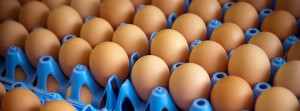Genetic selection over the last 70 years has seen substantial improvements in the performance of laying hens. In particular, the combined effects of increased egg production, reduced body weight and lower maintenance requirements have brought about significant improvements in feed conversion efficiency. The rates of feed efficiency gain are likely to slow, as egg production approaches the biological threshold of 365 eggs per annum. The emphasis of selection has changed over the past decade to meet specific market needs, due to the changing worldwide egg industry.
The hens’ adaptability to varying environments, while maintaining good health plays an important part in Hendrix Genetics – ISA’s breeding program. These days, commercial layers should be able to cope with a variety of field conditions and management systems, such as high-density cages, open houses or free range.
This article is all about the affects of pullet Rearing in relation to Egg Production




